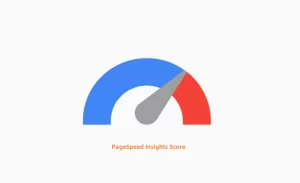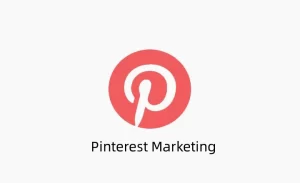Content marketing has become a vital strategy for businesses looking to attract, engage, and retain their target audience.
By creating and sharing relevant and valuable content, such as articles, videos, podcasts, and social media posts, businesses can establish themselves as thought leaders, increase brand awareness, and stay top-of-mind when it comes time for customers to make a purchase.

In this blog post, Dolma will explore the definition, benefits, implementation, and best practices of content marketing, as well as its relationship with SEO and social media.
What is Content Marketing?
In content marketing, relevant and useful content is developed and distributed to current and potential customers.
This content can take various forms, including but not limited to blogs, newsletters, white papers, social media posts, emails, and videos.
When executed effectively, content marketing not only showcases a company’s expertise but also demonstrates its commitment to providing value to its audience.
According to Mailchimp, a leading marketing platform, content marketing is a type of inbound marketing that attracts customers and builds loyalty.
By creating and sharing content that addresses the pain points and needs of their target audience, businesses can establish trust and position themselves as valuable resources.
Benefits of Content Marketing
Implementing an effective content marketing strategy offers several benefits to businesses. Let’s explore some of the key advantages:
Generation of More Leads
Content marketing is an effective lead-generation tool. By educating customers and building trust, businesses can generate more leads and establish relationships with potential customers.
When customers see a company as a thought leader in their industry, they are more likely to engage with the brand and consider purchasing their products or services.
Increased Online Visibility
A well-planned content strategy can help businesses attract more customers and website visitors. By offering educational and informative content that addresses their pain points, businesses can increase their online visibility through their website and social media accounts.
This increased visibility can lead to higher organic traffic and better search engine rankings.
Improved Authority and Thought Leadership
Developing high-quality content helps businesses establish authority and become thought leaders in their industry. By consistently providing valuable insights and expertise, businesses can position themselves as the go-to source for information on specific topics.
This authority not only fosters trust among customers but also enhances brand reputation and credibility.
Boost in Customer Loyalty
Customer loyalty is crucial for business success. By offering valuable content that informs and educates consumers, businesses can build trust and loyalty among their audience.
When customers perceive a brand as a reliable source of information, they are more likely to make repeat purchases and become loyal advocates.
The Key Players in Content Marketing
Creating and executing a successful content marketing strategy requires a well-structured team with individuals who possess specific skills and expertise.
Let’s explore the key roles involved in content marketing:
SEO Strategist
An SEO strategist focuses on optimizing content for search engines to drive organic traffic to the website. They conduct keyword research, create content briefs, and ensure that on-page, off-page, and technical SEO best practices are followed.
Monitoring metrics related to organic search performance helps them identify optimization opportunities.
Content Strategist
A content strategist is responsible for developing and managing the overall content marketing strategy. They conduct research, analyze customer trends, and collaborate with the content team to create content that aligns with the audience’s needs.
Additionally, they measure and report the performance of the content marketing efforts using analytics tools.
Editors
Editors review and ensure the quality of all content produced by the content marketing team. They check for spelling, grammar, style, and brand voice consistency.
Editors also manage the editorial calendar and collaborate with content creators to deliver high-quality content.
Content Creators
Content creators are responsible for generating high-quality content that aligns with the content marketing strategy. Writers create written content, such as blog posts, ad copy, and ebooks, while graphic designers craft visually appealing assets like charts and logos. Video editors, on the other hand, edit raw video footage to create engaging videos for various platforms.
Social Media Manager
A social media manager promotes content marketing assets on social media platforms to build an audience and drive traffic to the website.
They monitor and report social media performance, engage with the audience, and repurpose content for different social media platforms.
How Content Marketing Works
To effectively leverage content marketing, businesses need to deliver the right content at each stage of the sales cycle.
Let’s explore how companies use content marketing in each stage to engage and sell:
Awareness Stage
At the awareness stage, businesses should focus on addressing the top concerns and pain points of their target audience.
Content should be educational and provide how-to advice. The goal is to engage with potential customers and build brand awareness without directly selling.
Examples of content for the awareness stage include blog posts, articles, videos, and newsletters that provide valuable information on relevant topics.
Consideration Stage
During the consideration stage, businesses should provide a mix of helpful information and marketing content.
The content should educate the reader about the features and benefits of the business’s products or services while highlighting how they address the customer’s needs.
Case studies, how-to articles, videos, and checklists or worksheets are effective content formats for the consideration stage.
Closing Stage
In the closing stage, businesses can focus more on sales, but it is essential to continue emphasizing the unique expertise and benefits the business offers.
The central message should revolve around the business’s knowledge and the differentiating factors of its products or services.
Content formats that work well in the closing stage include case studies, user-generated content, buyer’s guides, product videos, and research reports.
Crafting a Successful Content Marketing Strategy
Before crafting a content marketing strategy, it is crucial to have a content marketing plan that outlines specific goals and metrics for success.
Here are some principles to follow when creating a content marketing strategy:
Identify Your Audience
Knowing your audience is crucial for creating content tailored to their needs and interests. Conduct research to gain insights into their demographics, preferences, and pain points.
This information will help you create relevant and engaging content that resonates with your audience.
Define Your Brand Offering and Positioning
Understanding what sets your brand apart from the competition is essential for creating a distinct brand message. Clearly communicating your value proposition helps establish your brand’s identity and resonates with your target audience.
Research Your Competitors
Analyzing your competitors’ content marketing strategies can provide valuable insights and help you identify opportunities to differentiate yourself.
By understanding the strategies and content they employ, you can develop unique and compelling content that surpasses what is already available in the market.
Measure Your Results and Polish Your Strategy
A content marketing strategy is not set in stone. It should evolve based on data and insights. Regularly measure the performance of your content marketing efforts, identify what works and what doesn’t, and make necessary adjustments to optimize your strategy.
Create Valuable and Relevant Content
Delivering content that educates, informs, or entertains your audience is paramount to a successful content marketing strategy. Focus on providing value and addressing your audience’s pain points to establish trust and build long-lasting relationships.
Getting Started with Content Marketing
Implementing a successful content marketing campaign requires careful planning and execution. Here are some steps to get started:
Identify Your Audience

To create content that resonates with your audience, it is crucial to have a clear understanding of their priorities, challenges, and preferences.
Conduct market research and develop detailed audience personas to guide your content creation process.
Determine the Right Formats
Different stages of the sales cycle call for different content formats. Consider what formats will best help you showcase the value your business offers.
This could include videos, blog posts, ebooks, social media posts, and more. Ensure that the format aligns with the preferences of your target audience.
Choose Distribution Channels
Decide where you will distribute your content to reach your target audience effectively. This could include your website, email marketing campaigns, social media platforms, industry publications, or other relevant channels.
Tailor your content to suit each channel’s requirements and audience preferences.
Establish a Sustainable Publishing Schedule
Consistency is key in content marketing. Develop a short-term plan (3-6 months) that outlines the content topics, formats, and publishing schedule. Consider your budget and resources to ensure that the plan is realistic and sustainable.
Follow Best Practices
Create compelling, well-written content that provides actionable advice and avoids jargon. Focus on a few relevant keywords related to your business and incorporate them naturally throughout your content. Ensure that your content delivers on its headline promises and stays on topic to provide the best user experience.
Content Marketing and SEO

Content marketing and search engine optimization (SEO) go hand in hand. While content marketing helps businesses attract and engage their audience, SEO ensures that their content is discoverable by search engines.
Here are some best practices for integrating SEO into your content marketing strategy:
Keyword Research
Keywords are the foundation of SEO. Conduct thorough keyword research to identify the terms and phrases your target audience uses to search for information related to your business.
Incorporate these keywords naturally into your content to improve search engine visibility.
Quality and Relevance
Search engines prioritize high-quality and relevant content. Ensure that your content is well-written, informative, and provides value to your audience.
Focus on delivering content that addresses their pain points and needs, rather than solely promoting your products or services.
On-Page SEO
Pay attention to on-page SEO elements, such as meta descriptions, alt tags for images, and URL structure. Optimize these elements with relevant keywords to enhance your content’s visibility in search engine results pages.
Title and Headings
Optimize your content’s title and headings by including relevant keywords. This helps search engines understand the topic of your content and improves its visibility in search results.
Social Media and Content Marketing
Social media plays a significant role in promoting and distributing content. It allows businesses to reach a wider audience, engage with their followers, and drive traffic to their content.
Here are some tips for leveraging social media in your content marketing strategy:
Choose the Right Channels
Identify the social media channels frequented by your target audience. Consider popular platforms like Facebook, LinkedIn, YouTube, Twitter, Instagram, and industry-specific platforms. Focus on the channels that align with your audience’s preferences and interests.
Tailor Your Copy to Each Channel
Each social media channel has its own style, voice, and audience expectations. Customize your copy to fit each channel’s unique characteristics while maintaining your brand’s tone of voice.
Familiarize yourself with each platform’s best practices and engage with your audience authentically.
Test and Modify
Experiment with different social media strategies and content types to identify what resonates most with your audience. Monitor and analyze the performance of your posts to understand what drives engagement and adjust your approach accordingly.
Conclusion
Content marketing is a powerful tool that can drive growth and establish your business as a trusted authority in your industry. By creating valuable and relevant content, businesses can attract, engage, and retain their target audience.
With careful planning, consistent execution, and integration with SEO and social media strategies, content marketing can deliver significant results for your business.
You may also want to read:


